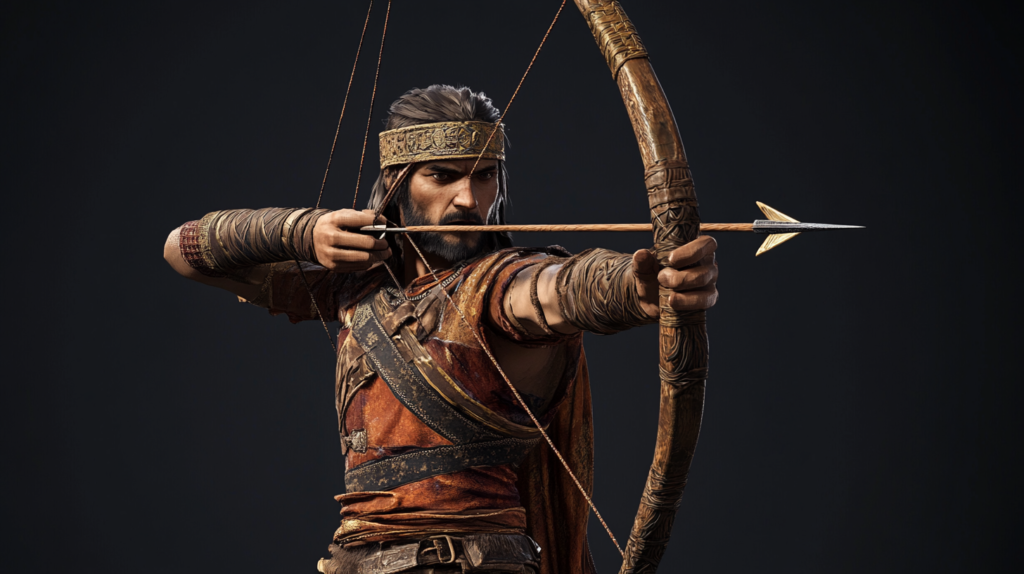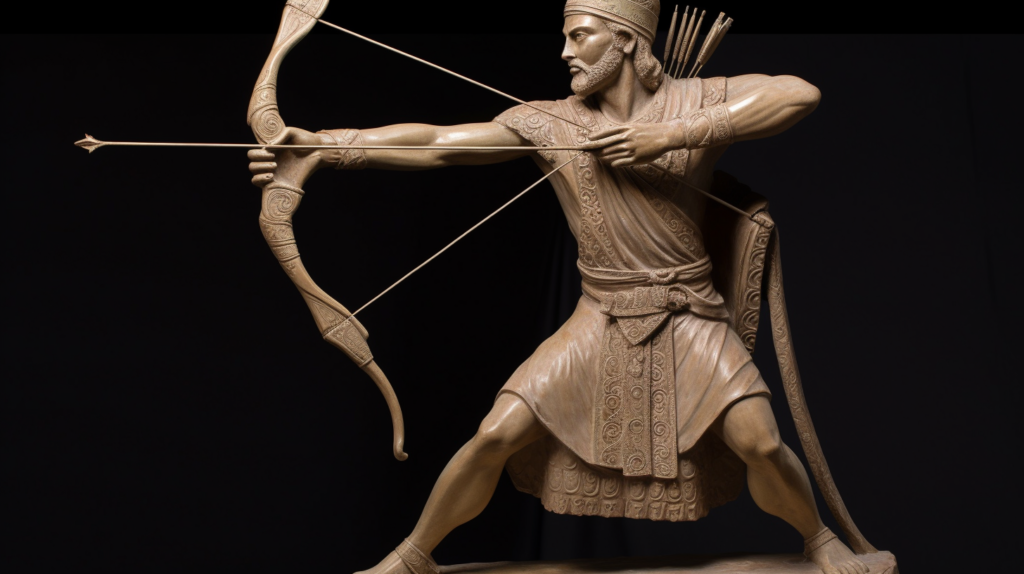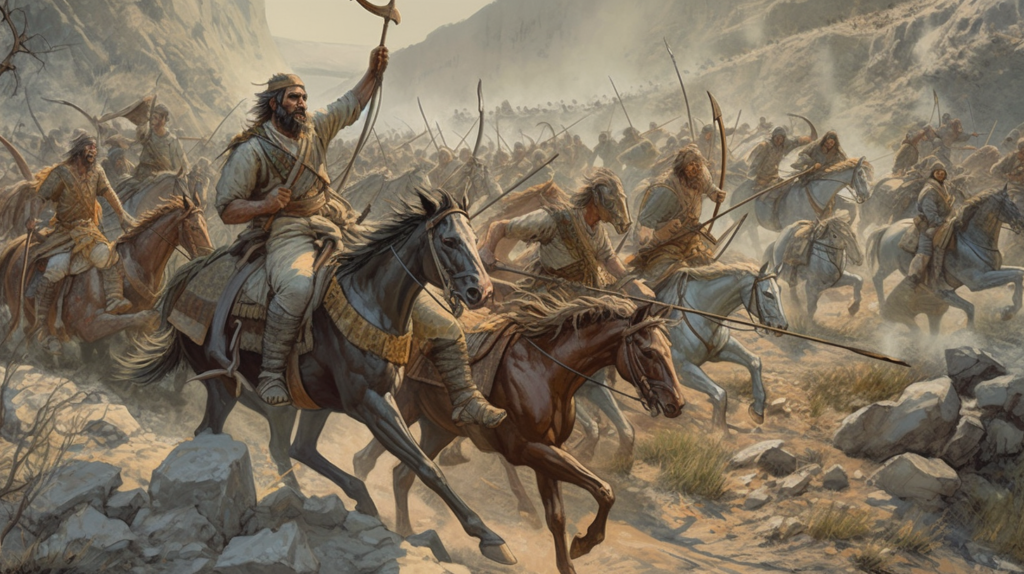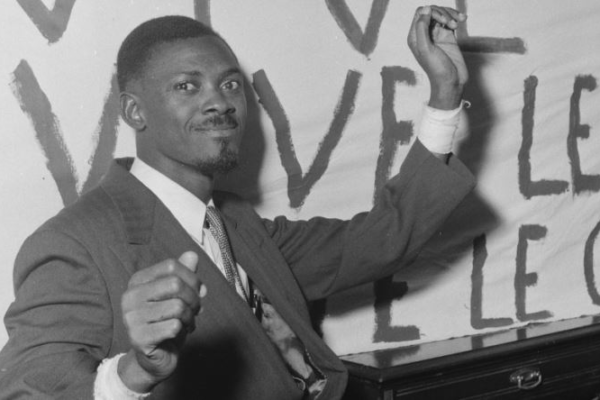Dust, Wind, and Death
As the roar of war merges with the desert wind, a whisper spreads among the clash of shields: “He strikes without being seen, and stuns with his blow.” This phrase was spoken in awe of the one who terrified armies long before battle even began , the Parthian archer. These warriors killed without facing their enemy, wrote victory while turning their backs. The Parthian archer was the military soul of the Parthian Empire, and one of the most fearsome tactical elites of the ancient world.

Origins of the Parthian Archer: Nomadic Roots, Imperial Warriors
The Parthians emerged around the 3rd century BCE in what is today Iran, Turkmenistan, and Afghanistan. Their nomadic heritage shaped every aspect of their existence especially their way of war. Raised on horseback, they saw the world through the eyes of the steppe. Even after becoming sedentary and forming a vast empire, the spirit of the nomad endured. The memory of the steppe was etched into their armies, and its finest embodiment was the Parthian archer.
The Parthian Shot: A Deadly Maneuver, A Tactical Revolution
When we speak of the Parthian archer, we cannot ignore the legendary tactic known as the Parthian shot. The archer, while appearing to retreat on horseback, would suddenly turn his upper body and fire a deadly arrow backward toward his pursuing enemies.
This maneuver demanded more than just agility — it required supreme balance, intuition, and lethal precision. The Parthian archer wasn’t merely attacking; he was controlling the tempo of battle, luring the enemy into traps, breaking their morale before the first blade was drawn.
Disciplined yet static forces like the Roman legions found themselves helpless in the face of such unpredictable, mobile warfare.

The Battle of Carrhae
In 53 BCE, Marcus Licinius Crassus , the wealthiest man in Rome, led a campaign against the Parthians. His heavily armored legions marched deep into Mesopotamia, only to encounter Surena’s elite Parthian archer units near the city of Carrhae (modern-day Harran).
Throughout the battle, Parthian archers never engaged directly. They kept moving, circling, drawing the Romans into exposed positions, and bombarding them with a rain of arrows. Rome’s famed infantry could not close the distance nor withstand the prolonged harassment. Hours of relentless assault broke their formation, then their spirit.
Military Training and Equipment: Becoming a Parthian Archer
To become a Parthian archer required not just natural talent, but years of rigorous training. Horse, bow, and arrow had to become extensions of the warrior’s body. A typical Parthian archer was equipped with:
-
Composite Bow: Crafted from wood, sinew, and horn. Small in size, yet incredibly powerful, perfect for mounted archery.
-
Arrows: Lightweight, iron-tipped, and fired rapidly. Archers often carried multiple quivers on their waist and back.
-
Armor: Light leather or lamellar armor designed for mobility rather than heavy protection.
-
Horse: Agile, desert-bred steeds trained for sudden turns, sprints, and coordinated movement.
-
Backup Weapons: Short sword, dagger, or lance though a Parthian archer avoided melee if possible.
The Parthian archer was not just a warrior he was a master of battlefield psychology. His goal was not simply to kill, but to disorient, humiliate, and dominate his enemy’s mind. Constant barrages of arrows, feigned retreats, and unpredictable movements drained morale and shattered discipline.
Against heavily armored troops, the arrows might not always pierce but they didn’t have to. They frayed nerves, broke ranks, and turned order into chaos.

The Parthian army wasn’t composed solely of Parthian archers, but these units were its tactical heart. Often working in coordination with cataphracts (heavily armored cavalry), they would soften the enemy with long-range attacks, then allow their armored allies to charge in for the finishing blow.
Their understanding of terrain, resource efficiency, and desert logistics made them lethal in prolonged campaigns, especially in arid climates where mobility was everything.
The impact of the Parthian archer extended far beyond their empire’s borders. The Sassanids who followed the Parthians adopted and refined these tactics. Later, the Turks and Mongols elevated horse archery into a dominant battlefield art.
Even the Chinese recorded praise for mounted archers who, like the Parthians, could shoot while retreating — a technique so effective it was feared across continents.
The Parthian archer is not just a relic of war. He is the spirit of motion, timing, and tactical brilliance. A warrior who needed no fortress, who carried his kingdom on horseback, and who turned every battlefield into a dance of death and deception.
Nations fell. Kings died. Empires crumbled.
But the wind still whispers of the horseman who turned back and let his arrow fly.
“We are still here.”



![Coin of Arsaces I. The reverse shows a seated archer carrying a bow, with the Greek legend reading "ΑΡΣΑΚΟΥ" (right) and "[AYT]OKPATOP[OΣ]" (left), meaning [coin of] "Arsaces"](https://historifyproduction.com/wp-content/uploads/2025/04/500px-Coin_of_Arsaces_I_1_Nisa-1-150x150.png)

